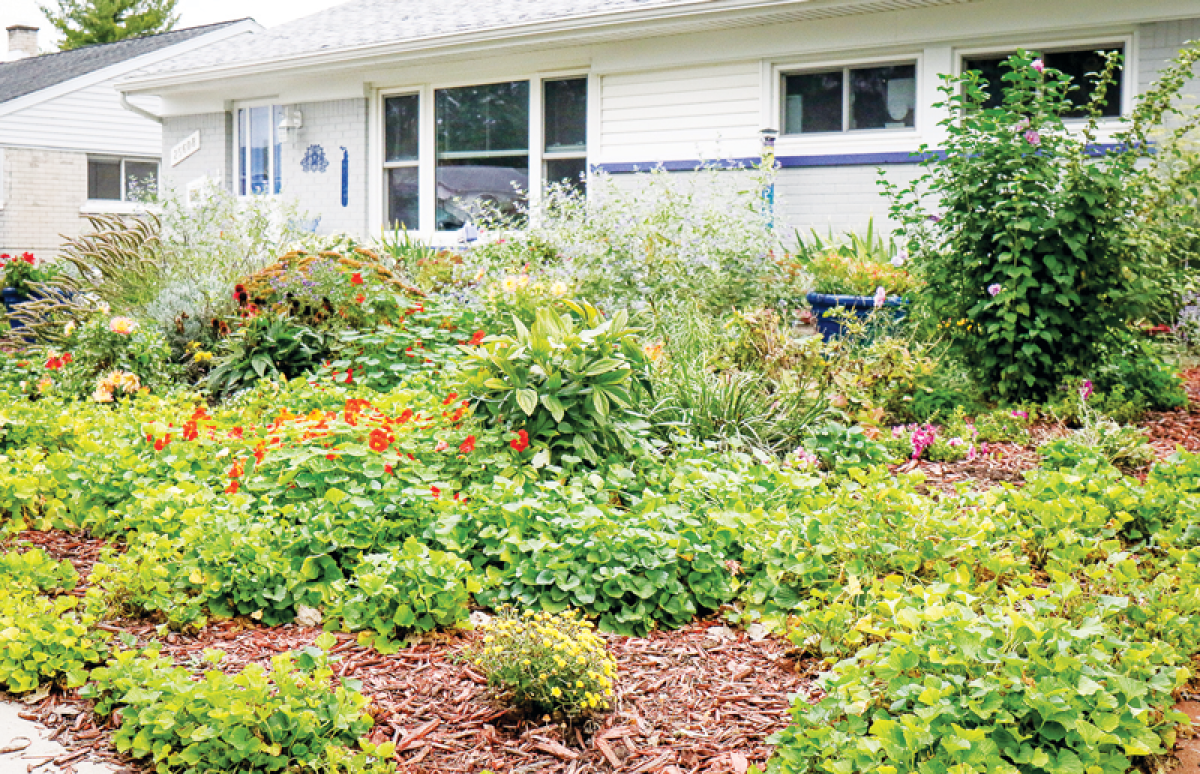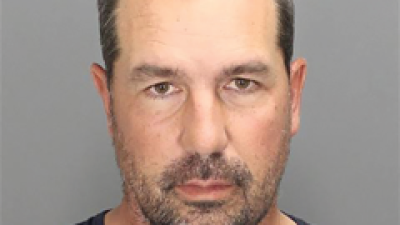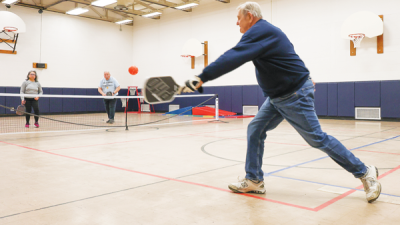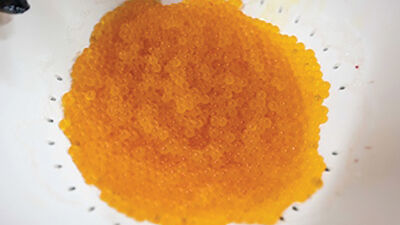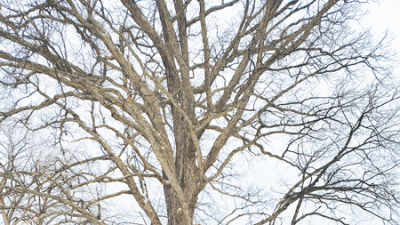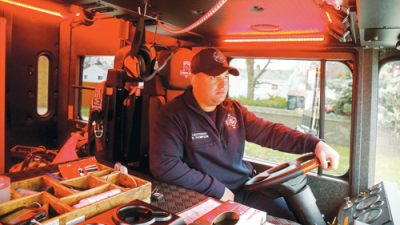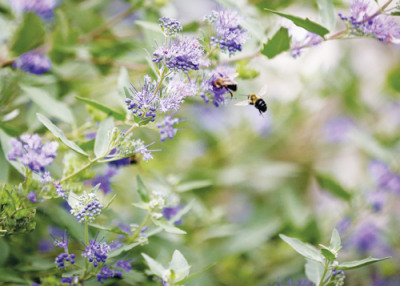
Bees are attracted to plants, such as caryopteris, commonly known as Bluebeard, in Busch’s garden.
Photo by Patricia O’Blenes
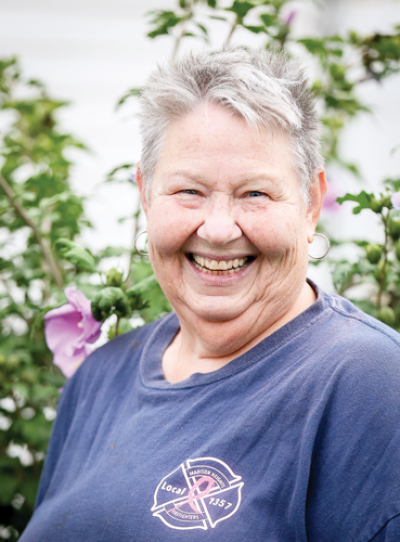
From watching her mother farm to cultivating gardens for more than 30 years, Merri Busch has been gardening all her life.
Photo by Patricia O’Blenes
METRO DETROIT — Fall gardening can look daunting, but remembering a few simple steps could make it easier.
Kris Kiser, president and CEO of the TurfMutt Foundation, which advocates for the care of outdoor spaces, said fall is a critical time for gardening because what gardeners do right now determines how everything looks in the spring.
“One of the challenges (is) you won’t see it immediately,” Kiser said. “If you’re going to overseed the yard or fertilize or dethatch, now is the time to do it.”
He also said this is the time to plant bulbs for the spring.
Raking leaves or not depends on how many trees are in the yard.
“If you have lots and lots of trees and you have a lot (of leaves), it can become suffocating,” Kiser said.
If a resident has a couple of trees that drop leaves on the lawn, Kiser recommends to mow the leaves with a mulching mower.
“That mulch is a terrific natural fertilizer,” Kiser said. “It’ll help the lawn and breaks down over the course of the winter.”
Residents should continue to mow their lawns as long as the lawns keep growing. Kiser said that when the lawn stops growing will depend on where a person lives.
“It does depend on temperature, water, sunlight,” Kiser said.
Aerating the lawn is also very important. It dethatches it and loosens up dead grass as well as punches holes in the ground. This is good for those who want to overseed. Kiser said overseeding is the best way to get a great spring lawn.
Kiser recommends that residents plant any perennials they have now, and they can plant just about anything aside from spring or summer flowering plants.
“(They can) get acclimated and growing some roots before the first freeze,” Kiser said. “Typically, when the first freeze comes, they’ll stop and they’ll go dormant. Some evergreens will stay on a little longer.”
A quick online search will tell what bulbs and plants are best at lasting through the winter and into the warmer seasons, Kiser said. He also said regional garden centers and nurseries buy plants that are ideal for their specific climates. He suggests asking the employees at these places of business for gardening tips and tricks.
Madison Heights resident Merri Busch is an avid gardener and has been cultivating her garden for around two years. Before she moved to her current location with her sister, she gardened at her home for around 30 years. She said gardening is a yearlong endeavor.
“In the spring, you’re basically preparing your beds, and in the summer, you’re planting everything and deadheading and cultivating and weeding,” Busch said. “And in the fall, you’re putting in more perennials that you want to add that are on sale, and in the winter, you’re looking at gardening catalogs and seeing how the stuff you planted survived.”
Busch got into gardening at a young age. Her mother was a farmer and Busch saw how much she enjoyed it.
“I think there’s a combination of both it being in my genes and me just finding joy in it myself,” Busch said.
Her garden is made of many different species of plants with some that attract pollinators, including marigolds, violets and others. She has a mixture of native and nonnative plants. This time of year, she thins a few plants such as her irises and waits until everything is done blooming to prune everything back.
Some of the leaves on the plants have turned yellow, and Bush said she used to think this was a nutritional issue. Through research, she found that the plant was going into dormancy.
“What I’ll do is when it gets, like, around November, I’ll just cut all those leaves down,” Busch said. “Throw a little mulch on top. Not much.”
When planting near sidewalks, Busch said it’s important to find plants that are salt tolerant. A few of the plants she has are junipers and Russian sages. Busch said that in the fall, she leaves her plants alone.
“I leave everything for the birds because there’s lots of birdseed out there,” Busch said. “And it provides a place for bees to live in hollowed out stems. So I just let everything die back and then in the spring is when I’ll take out the dead stuff.”
Busch’s favorite tool is a handheld item called a “hori-hori knife.” It has a serrated blade on one side and a curved blade on the other which is perfect for digging deep in the dirt to plant or weed. Busch said people can use them for all seasons.
Kiser recommends that residents plan their gardens to suit their tastes and the climate.
“The nice thing about our lawns and landscapes is you can tailor them to your needs,” Kiser said.
 Publication select ▼
Publication select ▼